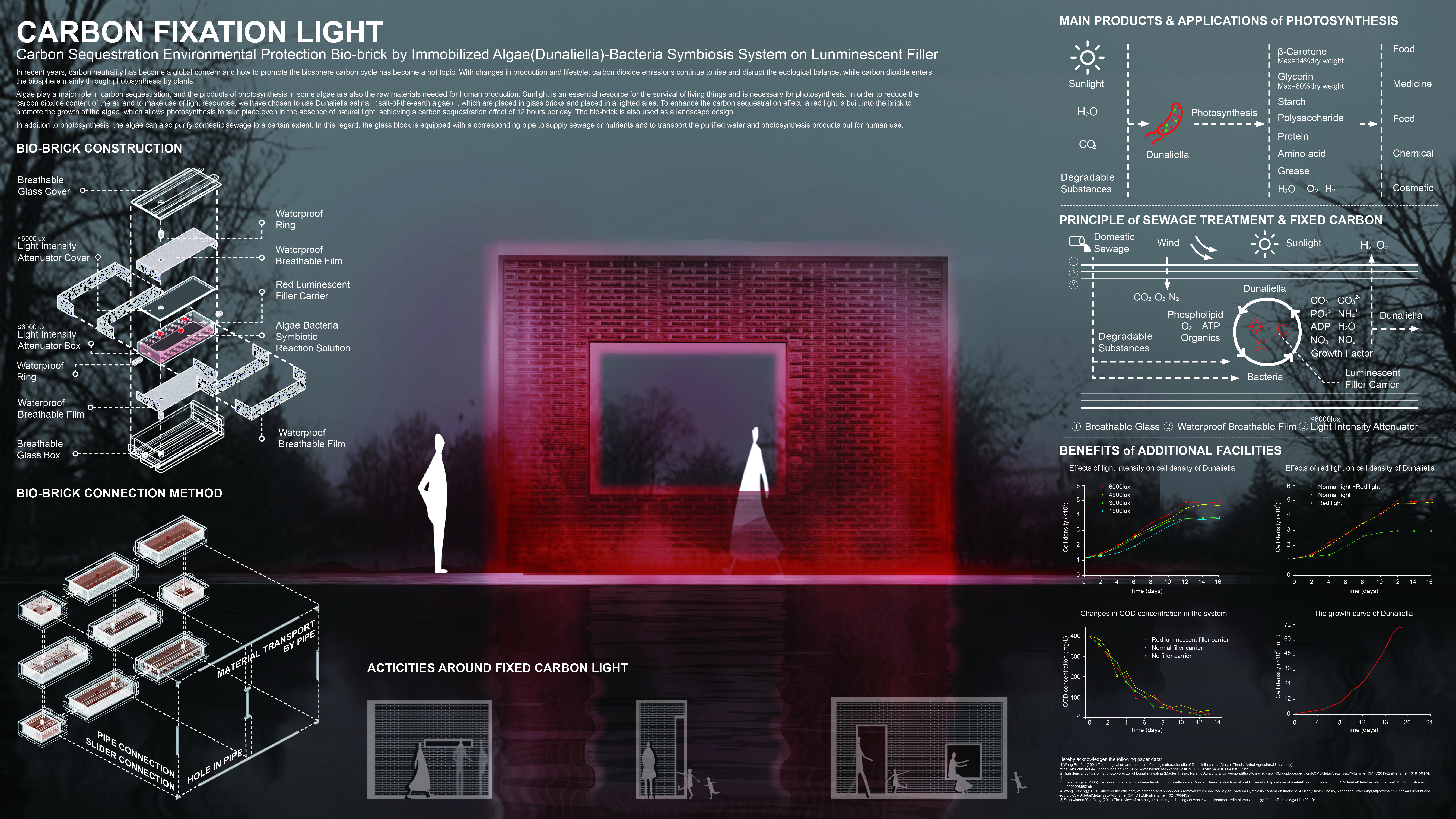CARBON FIXATION LIGHT

Category
Daylight in buildings - Region 4: Asia and Oceania
Students
Zhao Wenyu
Sun Peixu
Feng Hao
Chen YItong
School
Beijing University of Civil Engineering and Architecture
Country
China
Download
Download ↓
In recent years, carbon neutrality has become a global concern and how to promote the biosphere carbon cycle has become a hot topic. With changes in production and lifestyle, carbon dioxide emissions continue to rise and disrupt the ecological balance, while carbon dioxide enters the biosphere mainly through photosynthesis by plants.
Algae play a major role in carbon sequestration, and the products of photosynthesis in some algae are also the raw materials needed for human production. Sunlight is an essential resource for the survival of living things and is necessary for photosynthesis. In order to reduce the carbon dioxide content of the air and to make use of light resources, we have chosen to use Dunaliella salina (salt-of-the-earth algae), which are placed in glass bricks and placed in a lighted area. To enhance the carbon sequestration effect, a red light is built into the brick to promote the growth of the algae, which allows photosynthesis to take place even in the absence of natural light, achieving a carbon sequestration effect of 12 hours per day. The bio-brick is also used as a landscape design.
In addition to photosynthesis, the algae can also purify domestic sewage to a certain extent. In this regard, the glass block is equipped with a corresponding pipe to supply sewage or nutrients and to transport the purified water and photosynthesis products out for human use.

































